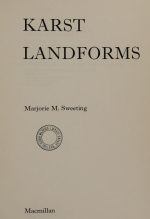Добрый день, Коллеги. Важное сообщение, просьба принять участие. Музей Ферсмана ищет помощь для реставрационных работ в помещении. Подробности по ссылке
Karst landforms / Карстовые формы рельефа
The study of karst land forms is a branch of geomorphology, the study of the landscape features of the earth’s surface and the processes by which these landforms are formed. The essential characteristic of areas of karst landforms is the presence of vertical and underground drainage. All karst regions are areas of massive limestones. Of all the commonly occurring rocks, limestone is the only one which is slightly soluble in ordinary atmospheric water and in the acidulated water associated with vegetation. As a result of the solution of the rock, drainage in limestones sinks into the ground and does not become integrated into surface rivers, whereas in non-karst areas the surface water becomes organised and systematised into valleys to form a connected network. The surface and underground relief features in limestones are shaped in a vertical sense. The parts of the surface where the water sinks into the ground become isolated from one another, so that the relief forms appear unconnected and disparate; hollows or pits are formed where the drainage sinks into the ground, giving the landscape a pitted character. Organised river valleys developed on other rocks become replaced by a series of disconnected and enclosed hollows, forming a landscape that has until quite recently been regarded as of a chaotic or disorderly nature. [1]. Earlier writers on karst areas distinguished between the so-called normal landscape (or tallandschaft) and the corrosion landscape (or korrosionlandschaft) of limestones, which distinction was made by Grund [2]. Jo van Cvijic, the first to write a comprehensive treatise on karst landforms, used the terms wannenlandschaft <...>




